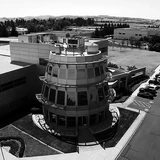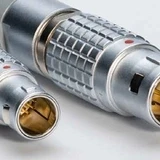AHOY TO A PERFECT STOP !

How to stop a boat at a given longitude and latitude to the nearest second and then maintain its precise position without an anchor or a buoy ?
This is the challenge that New Zealand company HamiltonJet has successfully met, thanks to their expertise in water jet propulsion.
Somewhere off the coast of the UK a service boat is approaching an off-shore wind farm at high speed. The sea is too rough for safe mooring and too deep to anchor. The vessel manages to stop right next to the platform to unload goods and personnel. Against the waves, it manages to maintain its position with amazing precision. The operations go smoothly as the captain stays at the command post without doing anything special.
This technical feat is made possible thanks to the combination of two technologies. On the one hand, water jet propulsion systems that HamiltonJet specialises in. On the other hand, the latest innovation of a company based in Christchurch, New Zealand: JETanchor, a revolutionary positioning system.
Mentioned as early as the 17th century, water jet propulsion technology has only been fully developed since the nineteen-thirties and forties. It was then further developed in the fifties by a New Zealander, Sir William Hamilton. He worked out the correct design and proved the efficiency of the system, especially for river navigation. Since then, the system hasn’t stopped improving. It has brought success to the company named after its founder “Sir Bill” – HamiltonJet, a global leader in the sector.
In order to understand this technology, we should first take a look at its biggest rival, the propeller propulsion system. Used on a very wide scale, it works with action and reaction: placed under the boat, the propeller rotates at high speed, pushing the water backwards, which pushes the vessel forwards. You also need a rudder to change direction.
Even though based on the same law of action and reaction, water jet propulsion systems use a different mechanism. In fact, they work like a pump: water is drawn by a submerged intake, accelerated through a turbine and discharged by a nozzle at the stern of the boat, thus creating the required driving force. There is no need for a rudder, as the stream of water is steerable. By changing directions to the right or to the left, the water jet steers the vessel in the required direction. Moreover, by lowering a deflector, the water jet is redirected under the hull to propel the boat in the astern direction, to stop abruptly or even to move sideways by the simultaneous coordinated action of several jets.
In order to coordinate all these functions, obviously, advanced control systems are required. This is where JETanchor comes into the picture. Completing the basic manoeuvres (move forward, steering, move backward, berthing), the latest product of the HamiltonJet factory has been fitted with a GPS guidance system with the help of which the captain is able to determine the exact coordinates of the location where the vessel needs to stop. Upon arrival at the requested destination, the system acts on the direction and power of the water jets to control and keep the boat stationary. Everything is automatic, significantly reducing the workload of the skipper.
Also, the latest generation system moves towards greener mobility, since it uses much less fuel than traditional manual guidance.
Intelligent propulsion, extremely agile, safe and durable: systems developed by HamiltonJet have given a new dimension to navigation. Today, 60,000 vessels are equipped by HamiltonJet worldwide: from lifeboats, to coast guard patrol boats, pilot vessels or ferries. One lesson to be learned from this success story: whether on sea or elsewhere, it is not enough to sail quickly, but you also need to be able to stop in the right place, at the right moment.


